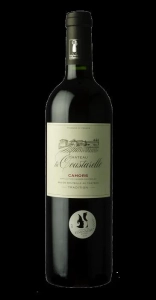At Paul Marcus Wines, our staff shares a deep love for classic wines–the “B, B, B, & C’s” (Burgundy, Barolo, Barbaresco, and Champagne) among other prized wines of the world. But in reality, these are usually wines for occasions and celebrations, and only sometimes for a Wednesday night. As true wine lovers, we also appreciate “table wine” in its truest form: wine for everyday drinking, and options that overdeliver for the price.
 With an increase in demand for value wines, we have been stuffing the Value Red and Value White sections to the brim. Located in the front of the store, these are our weeknight favorites–and our weekend porch-pounders. Of course, this is just a starting place, and there are many bottles in the $20 range tucked away throughout the shop.
With an increase in demand for value wines, we have been stuffing the Value Red and Value White sections to the brim. Located in the front of the store, these are our weeknight favorites–and our weekend porch-pounders. Of course, this is just a starting place, and there are many bottles in the $20 range tucked away throughout the shop.
Before PMW, I worked with small importer-distributors, so if you permit me to don my “importer” hat for a moment, I’d like to explain some challenges in sourcing affordable wines. While browsing our less expensive selections, you will notice that all but a few of these wines are imported. You might be thinking that local wines, with shorter transport times and fewer hands to grease along the way, should cost less. You’re not wrong–except for the fact that it is that much more expensive to grow wine in the States.
To start, the cost of land is exorbitant here, and many young winemakers in California and Oregon are purchasing fruit for their wine (ex. Folk Machine Parts & Labor). By contrast, many European wineries have long lineages extending more than four generations, and they have inherited the land and equipment (ex. Château La Coustarelle Cahors). Some come from places with a rich history of peasant farming such as Southern France and Italy, or Spain and Hungary.

La Coustarelle Cahors, a staple of our value section, is still only $15.
Another element is the cost of labor. I cannot speak to the labor laws outside of the U.S. (and, to be frank, I am no expert on domestic regulations either). But ultimately, years of reporting conclude that labor is a smaller percentage of overall cost in other countries than it is here. Seeing that there are relatively few domestic wines that are offered at value, we turn to imports to find the bang-for-the-buck options.
Perhaps a few years ago, we had no trouble finding great imported wines that hit the shelf under $15. These days, it is more difficult, as we are now dealing with rising fuel costs. Wait–didn’t I just say that it’s less expensive to transport wine all the way from Europe than it is to get straight from California? Yes, that’s true, but we must still consider all of the energy that brings wine (or any product) to the store: diesel for farm equipment, trucks to pick up wine from the cellar and bring it to the containers (refrigerated, of course) on ships, then back on trucks again to deliver wine to our front door. Glass is heavy, and this all adds up.
To provide context, a 40-foot refrigerated container that once cost $5,000 to go from France to Oakland is now upwards of $10,000. Adding insult to injury, the wine industry got hit with significant tariffs that affected a broad sector of imported wines. While the tariffs have passed, the effects are still filtering down to distributors who might still be sitting on some inventory that entered the country with the added tariffs.
Due to these and many other factors, wines that used to be $15 on the shelf are now creeping up to $20 or more. (A tangential note of optimism: There have been major technological improvements in alternative packaging such as cans, bag-in-box, and tetra-pak cardboard.) My point here shouldn’t come as a huge surprise–retail prices are rising across all products–and it’s worth having the conversation about what it takes to get a bottle of wine from the farm to your glass.
If you want to learn more, please don’t hesitate to talk to me or any of the staff on your next visit to the store!
— Ailis Peplau

Leave a Reply
Want to join the discussion?Feel free to contribute!